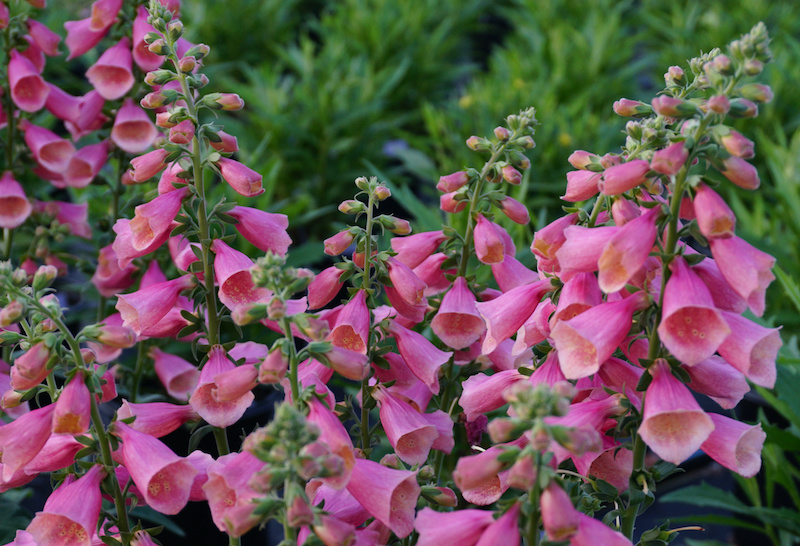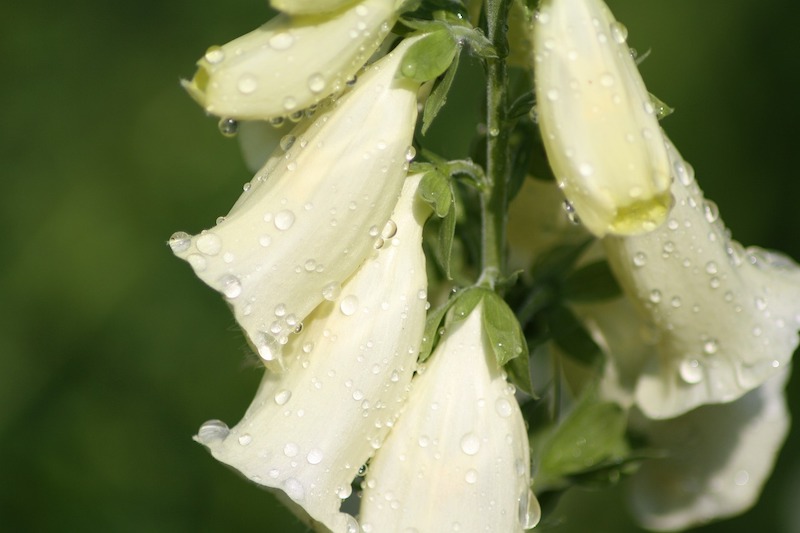Foxglove is an easy flowering biennial that prefers good drainage and evenly moist, moderately rich soil. Boggy soil can cause rotting diseases and should be avoided with Foxglove. Once Foxgloves are established in your garden, they require little maintenance, including minimal extra watering.

How To Tell If Foxgloves Need Watering
Foxgloves put all of their energy into forming a strong root system and foliage during the first year of growth. This is true whether the variety is perennial or biennial. The signs of underwatering are easy to recognize. Browning and drooping leaves indicate an immediate need for watering. Overwatering can appear the same with the addition of yellowing and soggy brown spots towards the base of the leaves. Feel the soil at least 3-4 inches down to make sure the soil is dry before watering.
How Often To Water Foxgloves
Foxgloves will require regular watering during the first few weeks after planting. This will help the plant form new roots while supporting the foliage. Allow at least one inch of water per week taking into account any natural rainfall.

Foxglove will need supplemental watering in climates with dry springs. The flower spikes that form in the second year require sufficient watering to reach their full height. Allowing for at least one inch of watering supports rapid flower growth late in the spring. Add organic mulch over the plant's root systems to help cool the soil while reducing evaporation. Over time, organic material, such as finely shredded arborist chips, leaves, or organic compost, break down and enrich the surrounding garden soil.
Foxglove growing in containers will require more attention to watering throughout the spring and summer months. Larger containers will hold moisture longer than small pots. Allow only the top 2-3 inches of potting mix to dry between waterings. This may mean watering pots every day during the hottest or driest weeks in your gardening climate.
Best Time To Water Foxgloves
Watering in the early hours of the day while the soil is still cool from the night results in less evaporation. Any leaves that get wet have plenty of time to dry fully before nightfall. This is important for reducing the risk of fungal diseases, which are more easily spread by wet leaves and humid overnight conditions. Watering during the winter months is only necessary for USDA zones 8-10 and only when daytime temperatures are above 45-50 degrees F. The soil dries out much slower during cooler temperatures, increasing the risk of overwatering. Allow at least the top 3 inches of soil to dry between waterings in the winter.
How to Water Foxgloves
Step 1 - Provide one inch of water per week depending on your climate.
Always include any natural rainfall in this calculation. One inch of water is approximately 1 gallon of water for Foxglove and is best split into 2 sessions a week. This encourages the roots to grow deeper in the ground in search of moisture.
Step 2 - Plants that are underwatered will have drooping or brown leaves as well as drooping or smaller flower spikes.
Keep the soil evenly moist near the root system by adding organic mulch. The material will slowly decompose and enhance the soil's texture and moisture retention over time.
Step 3 - Avoid overhead watering to help prevent fungal diseases.
Using drip irrigation or soaker hoses is the most efficient way to water plants while keeping the foliage as dry as possible.
Foxglove Watering Tips
- Well-watered plants will produce the best-quality flowers
- Drip irrigation and soaker hoses are the most efficient way to water plants
- Overwatering and underwatering have similar symptoms; always feel the soil to determine when to water
 |
Author Robbin Small - Published 6-28-2023 |
